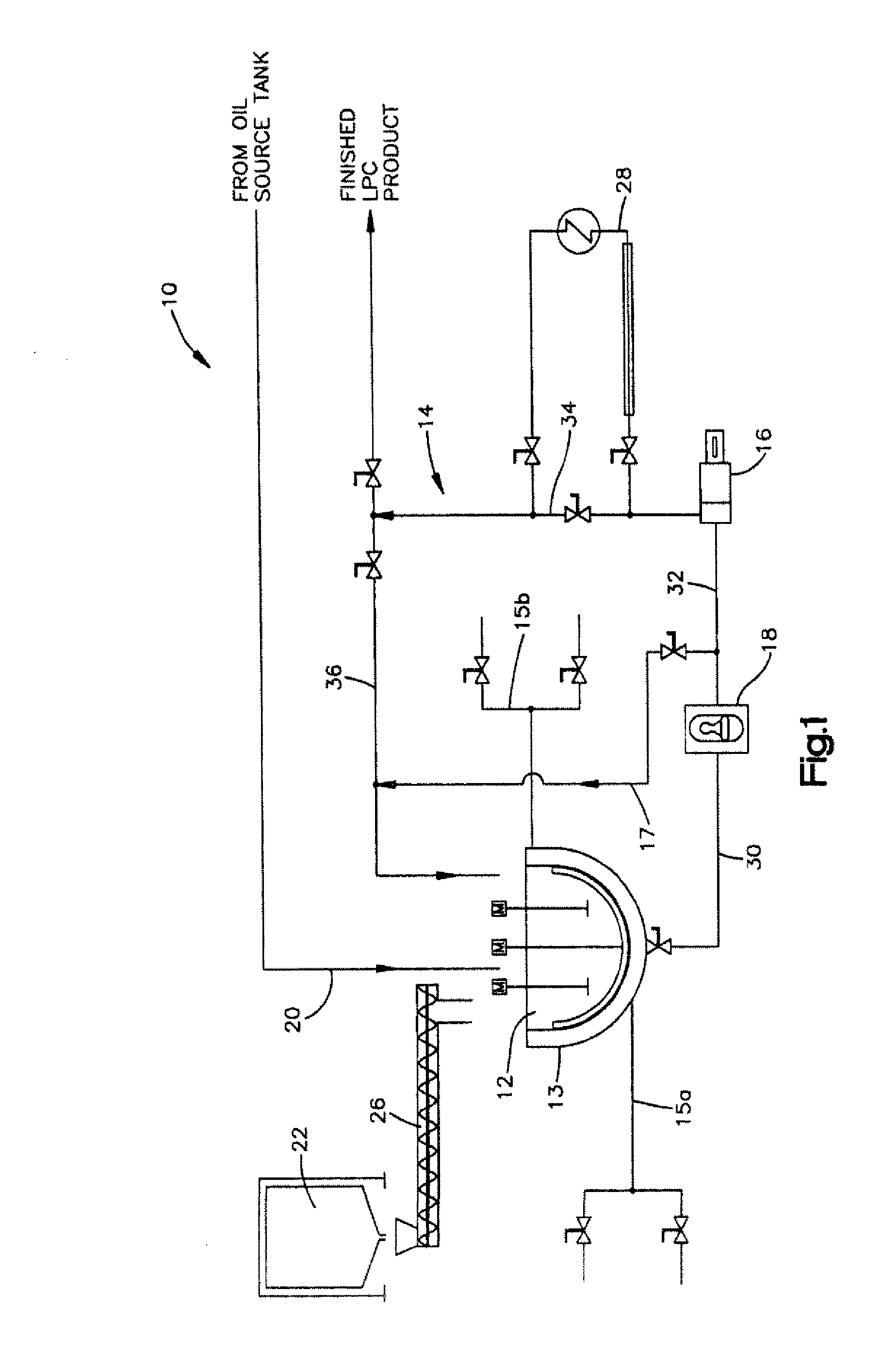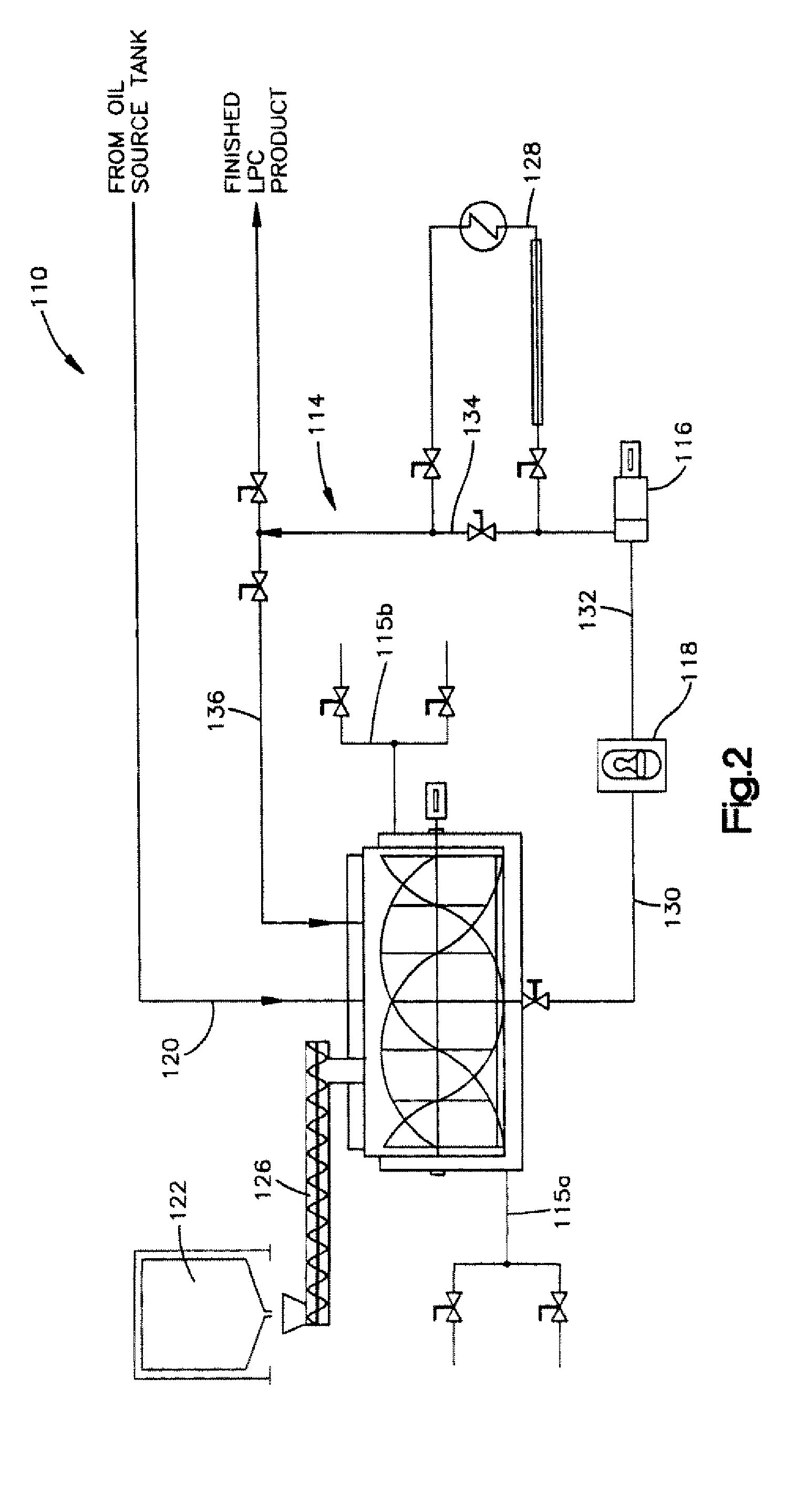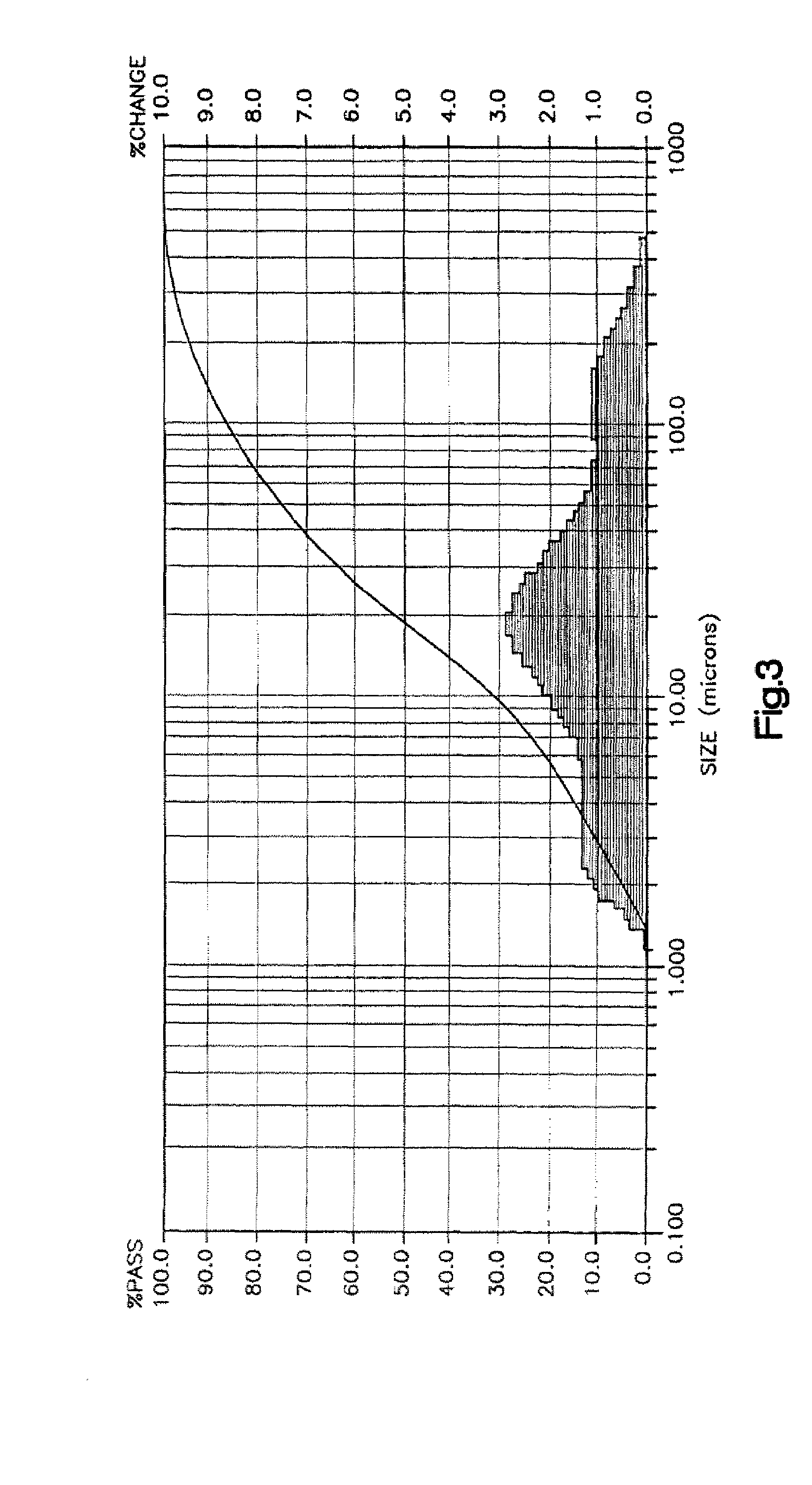Protein-containing food product and coating for a food product and method of making same
a food product and protein technology, applied in the field of edible solid compositions, can solve the problems of difficult to maintain the desired moisture level in the bar, hard and less appealing to consumers, etc., and achieve the effects of a thicker coating, higher protein confectionery product, and higher protein conten
- Summary
- Abstract
- Description
- Claims
- Application Information
AI Technical Summary
Benefits of technology
Problems solved by technology
Method used
Image
Examples
examples 1-6
Evaluation of Lipid-Containing Products
[0037]The following fats and blends were evaluated to determine their suitability for use in the present invention, by determining their melting points and solid fat contents over a range of temperatures as set forth in Table I below. The Mettler Drop Point (MDP) was measured by procedure AOCS Cc 18-80, and the solid fat content (SFC) at each of the temperatures indicated was measured by procedure AOCS Cd 10-57.
TABLE IEvaluation of Lipid-Containing ProductsMettler DropPoint (MDP)SFC (Solid Fat Content)ExampleType(° C.)10° C.21.1° C.26.7° C.33.3° C.40.0° C.1PKO*3170.641.09.90.10.82Fract.3587.773.549.80.30.4PKS**3PKS***3790.681.661.71.30.2480% Ex 1 / 32.373.150.118.70.60.120% Ex 3550% Ex 1 / 34.179.162.534.40.40.250% Ex 3620% Ex 1 / 36.085.273.550.90.10.480% Ex 3*Refined, bleached deodorized palm kernel oil, Fuji DF #14**Fractionated palm kernel stearine, Arrhus CE 21-20***Palm kernel stearine, Premium Vegetable Oils, PKS 75
[0038]Of the foregoing fats ...
examples 7-10
Preparation of Lipid-Protein Complexes
[0040]The following examples illustrate the process of manufacturing lipid-protein complexes on a laboratory scale in accordance with the invention. In each of the following examples, the lipid component, referred to as “fat” in the table, was fractionated palm kernel oil sold under the name CE 21-20 by Arrhus, and the protein component was instantized whey protein hydrolysate with 80% net protein, sold under the name Hilmar 8360 by Hilmar Ingredients. The grams of protein as stated in the table are the grams of this protein product. For these experiments, the particle size of the instantized protein product was reduced by grinding the protein in an Oster kitchen blender and sieving the material through a U.S. 60 mesh screen, and repeating that procedure for all material that did not pass through the screen, until the required amount of material was obtained that did pass through the screen. For each experiment, the ground instantized protein pr...
examples 11-15
Coating Compositions with Instantized Protein Product
[0041]Each of the LPC samples of examples 7-10, and another LPC sample with 15% net protein, were used in the preparation of solid coating compositions. The coating compositions were prepared by first mixing all the dr ingredients except the LPC together in a Hobart mixer, then adding a portion of the LPC, subjecting this mixture to grinding in the 3-roll mill described above until a fine powder was obtained, then returning the finely ground mixture to the Hobart mixer and adding the remaining portion of the LPC ad a small quantity of lecithin as needed, with mixing continued until the mixture is an even blend suitable for coating, solid objects. In each of the examples below, the fat content (not including the fat from the cocoa) was maintained at 30%. As more protein was added, the amount of sugar was reduced to keep the batch weight constant from batch to batch. An artificial sweetener product sold under the registered trademar...
PUM
 Login to View More
Login to View More Abstract
Description
Claims
Application Information
 Login to View More
Login to View More - R&D
- Intellectual Property
- Life Sciences
- Materials
- Tech Scout
- Unparalleled Data Quality
- Higher Quality Content
- 60% Fewer Hallucinations
Browse by: Latest US Patents, China's latest patents, Technical Efficacy Thesaurus, Application Domain, Technology Topic, Popular Technical Reports.
© 2025 PatSnap. All rights reserved.Legal|Privacy policy|Modern Slavery Act Transparency Statement|Sitemap|About US| Contact US: help@patsnap.com



